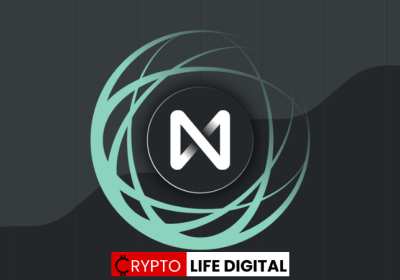Quick Guide On The Promising New Cryptocurrencies

What are cryptocurrencies?
Cryptocurrencies are digital or virtual currencies that are designed to work as a medium of exchange. They use cryptography to secure and verify transactions, as well as to control the creation of new units of a particular cryptocurrency. Bitcoin, the first and most well-known cryptocurrency, was created in 2009. Since then, thousands of new cryptocurrencies have emerged, each with its own unique features and benefits. In this article, we will discuss some of the most promising new cryptocurrencies.
- Ethereum (ETH):
Ethereum is a decentralized, open-source blockchain that was launched in 2015. It is the second-largest cryptocurrency after Bitcoin by market capitalization. Ethereum allows developers to build and deploy decentralized applications (DApps) on its blockchain. It also uses smart contracts, which are self-executing contracts that automatically enforce the rules and regulations of a contract.
Read Also: Crypto Mining For Beginners. All You Need To know
- Binance Coin (BNB):
Binance Coin is a cryptocurrency that was created by the Binance cryptocurrency exchange. It is used to pay transaction fees on the exchange, as well as for other services provided by Binance. Binance Coin has experienced significant growth in recent years, and it is now one of the top 10 cryptocurrencies by market capitalization.
- Cardano (ADA):
Cardano is a blockchain platform that was created in 2017. It is designed to be a more efficient and secure alternative to Ethereum. Cardano uses a proof-of-stake consensus algorithm, which is more energy-efficient than the proof-of-work algorithm used by Bitcoin and Ethereum. Cardano also allows for the creation of smart contracts and decentralized applications.
- Polkadot (DOT):
Polkadot is a blockchain platform that was created by Gavin Wood, one of the co-founders of Ethereum. Polkadot is designed to be a multi-chain network that allows for interoperability between different blockchains. It uses a proof-of-stake consensus algorithm, which is more energy-efficient than the proof-of-work algorithm used by Bitcoin and Ethereum.
- Chainlink (LINK):
Chainlink is a decentralized oracle network that was created in 2017. It is designed to connect smart contracts on the blockchain with real-world data and events. Chainlink uses a decentralized network of nodes to provide secure and reliable data feeds to smart contracts. It has seen significant growth in recent years, and it is now one of the top 20 cryptocurrencies by market capitalization.
- Solana (SOL):
Solana is a blockchain platform that was created in 2017. It is designed to be a high-performance blockchain that can process up to 65,000 transactions per second. Solana uses a proof-of-stake consensus algorithm, which is more energy-efficient than the proof-of-work algorithm used by Bitcoin and Ethereum. It has seen significant growth in recent years, and it is now one of the top 10 cryptocurrencies by market capitalization.
- Terra (LUNA):
Terra is a blockchain platform that was created in 2018. It is designed to be a stablecoin platform that can be used for payments and remittances. Terra uses a stablecoin called UST, which is pegged to the US dollar. Terra also allows for the creation of decentralized applications and smart contracts.
- Avalanche (AVAX):
Avalanche is a blockchain platform that was launched in 2020. It is designed to be a scalable and efficient platform for creating decentralized applications and enterprise-level solutions. Avalanche uses a consensus algorithm called Avalanche-X, which is designed to be fast, secure, and energy-efficient.
- Algorand (ALGO):
Algorand is a blockchain platform that was created in 2017. It is designed to be a high-performance platform for building decentralized applications and financial solutions. Algorand uses a proof-of-stake consensus algorithm, which is more energy-efficient than the proof-of-work algorithm used by Bitcoin and Ethereum.
Read Also: Tobias Andersen Cautions Terra Classic Community, Saying Joint 1 Layer Task force Is not Anonymous
- Cosmos (ATOM):
Cosmos is a blockchain platform that was launched in 2019. It is designed to be a decentralized network of interconnected blockchains that can communicate with each other. Cosmos uses a proof-of-stake consensus algorithm, which is more energy-efficient than the proof-of-work algorithm used by Bitcoin and Ethereum.
- Polygon (MATIC):
Polygon (formerly known as Matic Network) is a blockchain platform that was launched in 2017. It is designed to be a high-performance platform for creating decentralized applications and blockchain solutions. Polygon uses a proof-of-stake consensus algorithm, which is more energy-efficient than the proof-of-work algorithm used by Bitcoin and Ethereum.
- Harmony (ONE):
Harmony is a blockchain platform that was launched in 2018. It is designed to be a high-performance platform for building decentralized applications and blockchain solutions. Harmony uses a consensus algorithm called Fast Byzantine Fault Tolerance (FBFT), which is designed to be fast, secure, and energy-efficient.
- Filecoin (FIL):
Filecoin is a blockchain platform that was launched in 2020. It is designed to be a decentralized storage network where users can rent out their unused storage space to other users. Filecoin uses a proof-of-replication consensus algorithm, which is designed to be energy-efficient and secure.
- Chia (XCH):
Chia is a blockchain platform that was launched in 2021. It is designed to be a more energy-efficient and sustainable alternative to Bitcoin and other proof-of-work cryptocurrencies. Chia uses a consensus algorithm called proof-of-space and time, which uses unused hard drive space instead of computational power to secure the network.
Conclusion:
These are just a few examples of the many promising new cryptocurrencies that are available today. It’s important to do your own research and due diligence before investing in any cryptocurrency, as the market can be highly volatile and unpredictable. However, with the growing popularity and adoption of blockchain technology, it’s clear that cryptocurrencies are here to stay and may represent a viable investment opportunity for those willing to take on the risks involved.
Follow us on Twitter, Facebook, Telegram, and Google News

Cryptolifedigital is a cryptocurrency blogger and analyst known for providing insightful analysis and commentary on the ever-changing digital currency landscape. With a keen eye for market trends and a deep understanding of blockchain technology, Cryptolifedigital helps readers navigate the complexities of the crypto world, making informed investment decisions. Whether you’re a seasoned investor or just starting out, Cryptolifedigital’s analysis offers valuable insights into the world of cryptocurrency.










